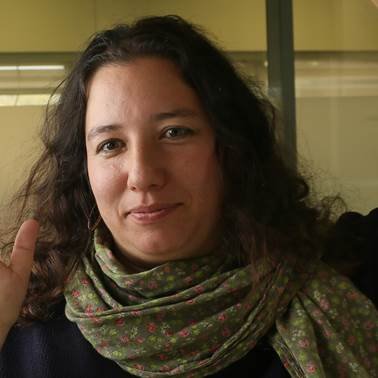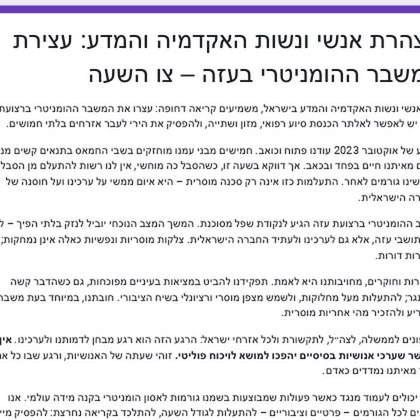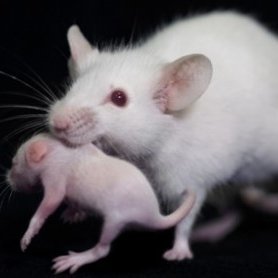
Michal Ramot
@MichalRamot
Followers
776
Following
2K
Media
18
Statuses
345
Neuroscientist at Weizmann institute of science. Human cognition and cortical networks, what makes us individuals
Israel
Joined May 2017
Finally out! https://t.co/74uImwrHwi On top of all the findings in the linked preprint thread ⬇️ this new and improved published version contains an important addition on test-retest reliability across different time points, and how this affects various types of tasks, a short 🧵
nature.com
Communications Psychology - Reliability of cognitive task measures improves as a function of number of trials. Because of differences in reliability convergence, tasks differ in suitability as...
Very excited to share the first preprint from our lab! https://t.co/BY4iMinKmA We develop a metric to score how well different tasks reliably separate individuals. We demonstrate this on a dataset of 250+ participants, and provide a simple tool for assessing old and new tasks. 🧵
7
25
90
Couldn't have said it better than @LabNir, come join us! Full program here:
The Mind's Eye: A quest from vision to consciousness - symposium honoring Rafi Malach Incredible lineup celebrating the career of an amazing scientist. Join us on December 14-15 at the Weizmann Institute ! @ShaGilDot @GaliaAvidan @kalatwt @ShanyGrossman @HassonLab @MichalRamot
0
0
2
Pls RT: We're hiring! Looking for a postdoc research fellow to join our study of individual differences in plasticity in #blindness (+ possible extension to #deafness) using fMRI. https://t.co/Sv1UVLkUsV
#hiring #postdoc #neurojobs #Neuroscience #NeuroTwitter
0
9
18
Please join us!! Don't answer atrocities with more atrocities. This is not the way... Not in our name! https://t.co/WaY8VqO0tX
docs.google.com
אנו, אנשי ונשות האקדמיה והמדע בישראל, משמיעים קריאה דחופה: עצרו את המשבר ההומניטרי ברצועת עזה. יש לאפשר לאלתר הכנסת סיוע רפואי, מזון ושתייה, ולהפסיק את הירי לעבר אזרחים בלתי חמושים. הפצע של אוקטובר...
0
7
23
📢 I'm looking for a postdoc to join my lab at NYU! Come work with me on a principled, theory-driven approach to studying language, learning, and reasoning, in humans and AI agents. Apply here: https://t.co/XLacI53LLB And come chat with me at #CogSci2025 if interested!
0
50
165
Our hope exactly: "I look forward to the day when Israeli scientists can freely collaborate with scientists in Iran and do good for the region and for humanity. I wish the same for scientists in Gaza and throughout the Middle East." @WeizmannScience
nature.com
Nature - Scientific research is at the heart of Israel’s success and has worldwide benefits. Our work will continue despite adversity.
1
7
27
Our latest work is out today in @NeuroCellPress . Using voltage imaging, we clarified how serotonergic neurons compute action effectiveness during learning behavior. With Ravid Haruvi, @zq_wei and @MishaAhrens
https://t.co/D1pl5LFfHW
4
34
159
Must read new book by Nachum Ulanovsky!! The book outlines a new revolutionary approach for studying the brain closer to the natural behavior of animals and humans — namely, taking a more ecological approach to neuroscience.
Nachum's new book Natural Neuroscience is out! A fresh take on how brains work in the real world—well worth a read.
1
2
15
Was great to be able to contribute to this fantastic project led by @Simone_Luchini
Enhancing creativity through neurofeedback: Check out our recent paper where we use covert neurofeedback to entrain default-executive coupling during creative thinking! Xinbing (Jack) Zhang, Jack White, @Michael_Luehrs, @MichalRamot, & @Roger_Beaty
https://t.co/glnpPNmJ6R
0
0
5
My speech at the UN on the work of SafeHeart our non profit giving clinical care to the Nova Survivors and the amazing research with them at @UofHaifa. https://t.co/mgwxD7VQKM
3
2
28
Our results suggest that perception and memory might be less intertwined than we think, with implications for prosopagnosia and memory related disorders. Work by the fantastic Jan Kadlec, in collaboration with @jesse_rissman and Catherine Walsh.
0
0
1
We test this with an additional face inversion experiment. We find greater inversion effects for easier perceptual levels --> more holistic processing at easy levels --> more interaction at easy levels as a result of face-specific interference which disrupts holistic processing.
1
0
2
Instead, we hypothesize that the face-related distractor in the face-specific interference task disrupts holistic face processing, pushing participants to switch to a feature-based strategy instead.
1
0
0
This pattern of interaction does not fit with theories of increased cognitive load, or overlapping shared resources. Also, just increasing cognitive load through an orthogonal, non-face related interference condition (math), has negligible effect on performance on the face task.
1
0
0
An equally robust finding though, is that under more complex conditions (an emotional face interference task), we do find interactions. Surprisingly, these go in an unexpected direction - more interaction for easy rather than hard perceptual conditions. Why?
1
0
0
Across four large, independent datasets, with over 800 participants in total, we find clear evidence that face perception and memory are fundamentally independent, at least when task demands are low.
1
0
0
We parametrically modulate difficulty in each domain separately. Shared resources would imply interactions between perceptual and memory difficulty, with increasing interaction as difficulty increases. If they are independent however, we would expect difficulty to be additive.
1
0
1
We designed the Face Memory and Perception (FMP) task to systematically test whether perceptual and memory components of face processing rely on shared cognitive resources, or function independently.
1
0
0
New preprint! 🧵 Are perception and memory fundamentally independent processes, or are they overlapping and impossible to disentangle? We turn to the well studied face system to ask this question, using a new task and 4 datasets with 800+ participants. https://t.co/yIvZWIVL1k
biorxiv.org
A long-standing debate in neuropsychology concerns whether perception and memory function as independent systems or interact to support cognition. To investigate this, we developed the Face Memory...
3
7
17
We are excited to share our work on dynamical constraints on neural population activity, published as a cover article in @NatureNeuro. It was led by Emily Oby, @AlanDegenhart, @ErinnGrigsby, with @aaronbatista and team. https://t.co/Oi2wXl0MIz (1/n)
1
23
90
In time for the new year! Our single-cell dataset of male and hermaphrodite brains is online! & a freely available website https://t.co/ys4sdHhdNE A Blueprint of Sex-Specific Neuronal Regulation in the C. elegans Nervous System at Single-Cell Resolution
biorxiv.org
Sex-specific behaviors within a species are often attributed to variances in neuronal wiring and molecular signatures. However, how the genetic sex shapes the molecular architecture of the nervous...
6
15
65














